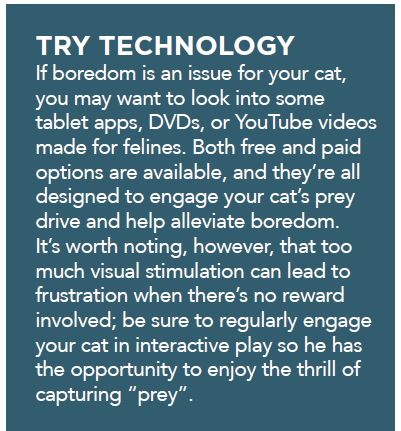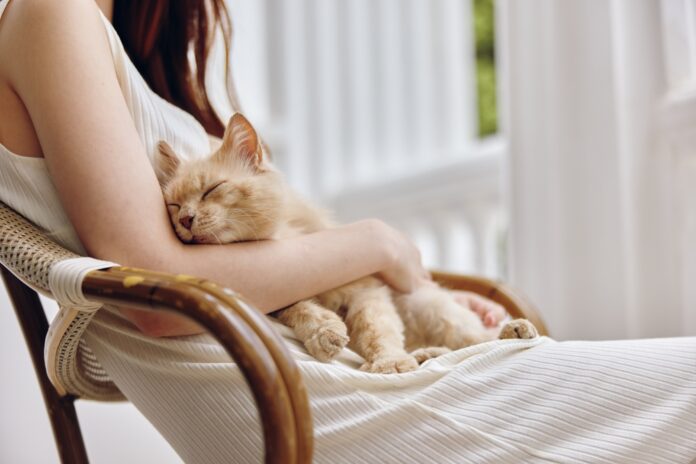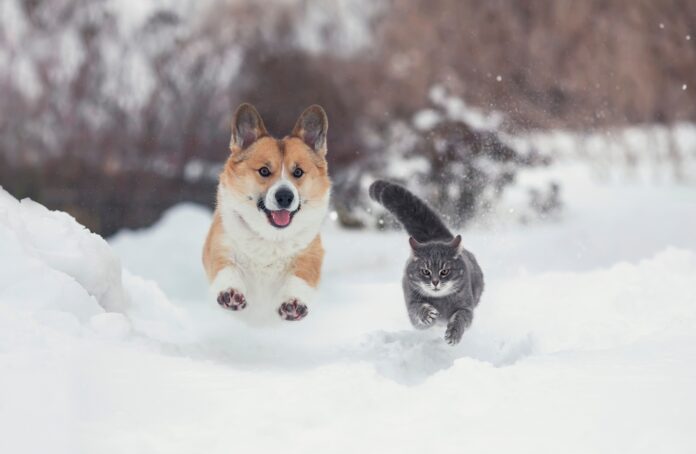Improve your cat’s well-being with sensory enrichment
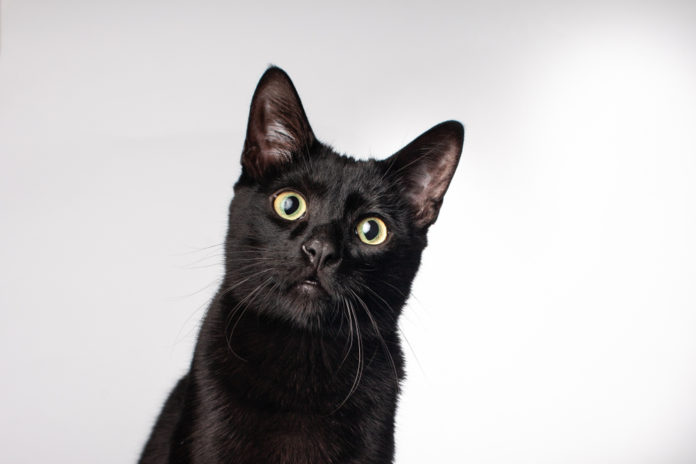
Is your cat bored, stressed or anxious? Sensory enrichment helps restore him to calmness and balance by appealing to all his senses.
Cats can easily get bored or stressed. In fact, boredom in itself can lead to stress and anxiety. Although our feline friends mask their emotions well, stress can manifest as aggression, destructive behavior, urinating outside the litter box, digestive upsets, or excessive grooming. Sensory enrichment can help restore your cat’s sense of calm and balance by simultaneously easing his angst and relieving boredom.
Perhaps you’ve noticed that certain sounds, textures, scents and colors have a positive impact on your mood. Cats also have the ability to benefit from these environmental factors. If you’re already supporting your cat’s need to express his natural behaviors through interactive toys, scratching surfaces, outdoor views and climbing opportunities, you’re well on your way to ensuring his mental health. But you can go even further by introducing interesting or pleasant sounds, tastes, sights, scents and physical sensations to your cat’s environment.
Enhancing your cat’s environment – appeal to his senses
Cats are predators with a strong exploratory streak and plenty of curiosity to spare. They tend to appreciate creative solutions that make home a more interesting place to be. Here are some ways to appeal to all your cat’s senses in a manner that will be both calming and interesting for him.
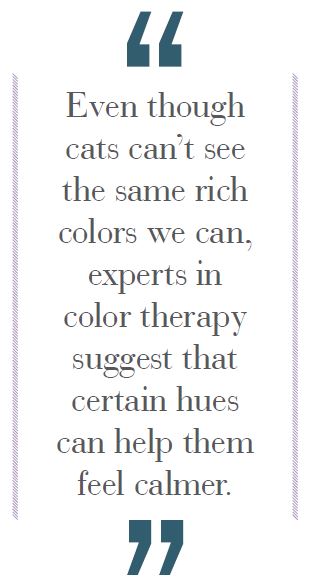 1. Sight — Emphasize certain colors
1. Sight — Emphasize certain colors
Cats’ eyes have only blue and green cones, which means felines are best able to see blue, yellow and green. Other colors appear to them in different shades of black and gray, similar to how our own vision shows color at twilight, when it’s very difficult to make out the full visible spectrum.
Even though cats can’t see the same rich colors we can, experts in color therapy suggest that certain hues can help them feel calmer. Try blue to counteract nervousness or hyperactivity, indigo for calming and clearing negativity, or violet to encourage a sense of soothing calm. Green is also associated with calmness. Blankets, décor and colored lights are recommended methods for introducing different hues into your cat’s environment. If you like a certain color and your cat seems to enjoy it too, why not try painting his favorite room the same shade?
2. Sound — Soothe with sound
Cats don’t like sudden loud sounds, or noisy environments in general. If you think noises such as construction or traffic are bothering your cat, consider exposing him to more soothing sounds to mask the unpleasantness. White noise such as a fan might help, and so might music such as smooth jazz, light classical, or contemporary easy listening. You can also buy cat-specific music, including soothing tracks that last hours on end, designed to give your cat comfort when no one is home.
3. Smell – Relax him with scent
Scent-based products like Feliway can provide sensory enrichment for your cat and help him feel less stressed. Just like your cat’s natural facial pheromones, these products send a scent-based message that signals safety, comfort and calmness. There are sprays that you can apply to his fur and bed as needed, while some brands offer plug-in versions that help promote a calm environment around the clock.
Editor’s note: Be sure to avoid artificial scents such as air fresheners or perfumes – while these may smell pleasant to you, they can be harsh and harmful to your cat. Essential oils can also be used for calming purposes, but they must be of very high quality and used properly.
4. Taste — Make eating fun
Satisfying your cat’s natural hunting instincts is another great way to reduce stress or boredom. For example, situate small amounts of food in both high and low spots throughout your home. If you like, go the extra mile by hiding healthy treats inside paper bags, small containers, and purpose-built treat puzzles. Pent-up stress and boredom are relieved as your cat becomes more engaged and enjoys “hunting” for his food. After time well-spent with food-based challenges, your cat will feel calmer and more relaxed.
5. Touch – Calm with physical contact
Make time every day to stroke your kitty (if he’s the kind of cats that enjoys petting!). Your gentle loving touch will help calm him. If he likes being brushed, you can also use grooming as a way to appeal to his sense of touch – just be sure the tools you use don’t scratch his skin or pull his fur.
Other ways to stimulate his sense of touch are to make sure he has access to several scratching posts and surfaces, and a variety of toy types. Another good idea is a soft plastic self-groomer that you infuse with catnip and attach to the corner of an interior wall; most cats love rubbing their faces and flanks against these tools.
How cats benefit from sensory enrichment
Sensory enrichment offers cats many physical and emotional benefits, including:
- Feelings of confidence and security
- Opportunities to engage all the senses, providing enjoyable mental stimulation
- Balanced emotions and reduced stress, leading to sound, restorative sleep
- Playfulness, which provides exercise, alleviates boredom, and contributes to good health overall.
Perhaps best of all for both of you, calm happy cats tend to experience stronger bonds with their humans. After all, it’s far easier for us to get along with our animals when they aren’t exhibiting unwanted behaviors brought on by stress. Additionally, a cat that isn’t bored or anxious, but feels comfortable, safe and happy, is less likely to look for ways to escape the house.
Sensory enrichment for cats doesn’t have to involve major lifestyle changes. Many solutions are quick, easy and inexpensive, and can make a big difference in your cat’s well-being. Try some with your own feline friend!



